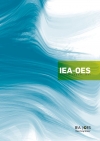


Great strides have been made towards the commercial deployment of ocean energy in 2005. Following a banner year in 2004, during which three of the leading devices in wave energy and two marine current devices were tested as prototypes at sea, policy makers responded with announcements of incentives to support initial deployments of multiple device arrays in a number of countries. Even more signifi cantly, the fi rst commercial orders for a wave farm took place this year, as Ocean Power Delivery signed a deal with a Portuguese consortium for an initial order of three 750kW devices and a Letter of Intent to purchase an additional 30 devices before the end of 2006. We may look back at 2005 as the year of birth of a new industry.
In the meantime, developments are continuing both in Europe, where ocean energy researchers and developers have been active for a number of years, and in countries outside Europe where ocean energy has more recently caught the attention of the public and policy makers. Energetech’s fi rst prototype wave energy plant was deployed in Port Kembla, Australia in October. Ponte di Archimede’s Enermar vertical axis turbine device, operating in Italy’s Straits of Messina, installed a grid connection to Sicily during the year.
A number of other projects were at the stage of building prototype models for installation and commissioning in 2006 including Verdant Power from the US, the Pearson College EnCaNa tidal energy project on Vancouver Island, Canada, and Ireland’s Wavebob Ltd. Galway Bay quarter scale model project.
Finally, we expect to see the commissioning of a repowered Pico Plant before the year is out. Major policy announcements in 2005 included consultation and announcement of the proposed details of the UK’s £50M Marine Renewables Deployment Fund which aims to provide a combination of capital and revenue support to device development to fund the gap between prototype demonstration and commercial deployment. The Canadian government has also demonstrated a renewed interest in ocean energy technologies by requesting an ocean energy briefi ng for the energy minister’s National Advisory Panel which is considering new innovation funding. Finally, ocean energy was recognized as an eligible renewable energy in the US in the 2005 Energy Policy Act which allows Congress to appropriate funds for ocean energy in the future.
As the technologies begin to show commercial viability, the need for companies, who are developing and selling the technologies, to organise increases. The European Ocean Energy Association was launched at the biannual European Wave and Tidal Energy Conference in September 2005. Its objectives include supporting market development, facilitating networks, promoting the benefi ts of the sector and acting as one voice representing the sector to EU policy makers. Similar developments in North America have led to the creation of the Ocean Renewable Energy Coalition in May. Both are welcome developments.